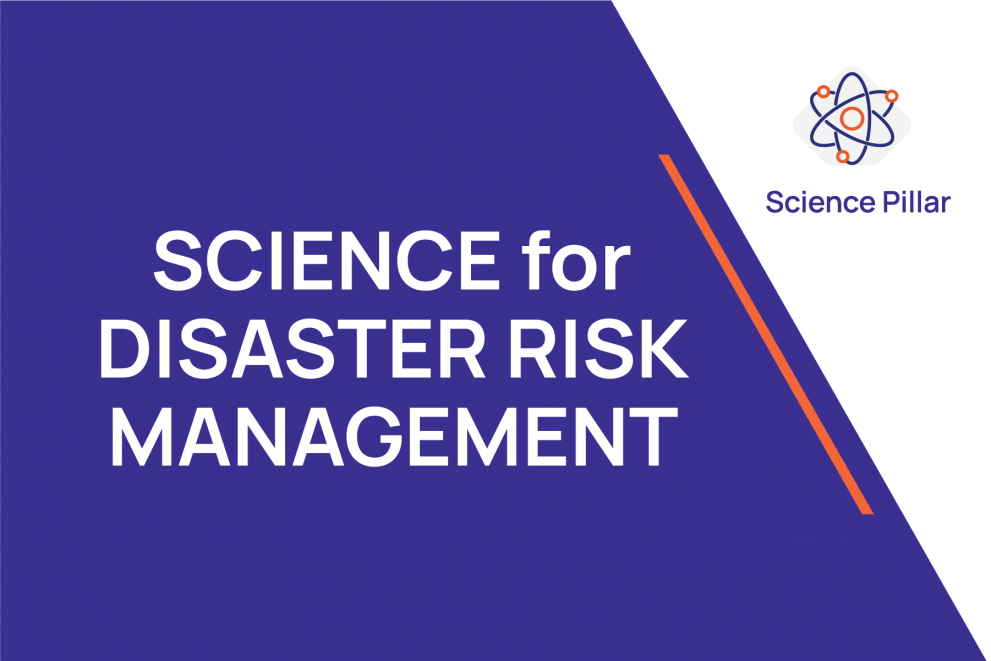How to address the gaps
While knowledge in the area of civil protection and disaster management is abundant, gaps do still exist. The current understanding and recent research findings show that dealing with, for example, new, compound, cascading and concurrent hazardous events remains challenging.
Knowledge gaps can be partially filled with good practices, but to do so, these practices should be compiled, compared, harmonised and generalised to make them transferable and useful for the risk management obligations of the EU Member States, such as the Disaster Risk Management Capabilities Assessment, Disaster Loss Databases, Science-policy interfaces or National Risk Assessment.
In this section, you will find a selection of outputs dealing with disaster risk management knowledge gaps and their possible solutions. They are outcomes of the work conducted by the European Commission's Disaster Risk Management Knowledge Centre.
Science for DRM series of reports
The Disaster Risk Management Knowledge Centre (DRMKC) has committed to producing a series of reports to analyse, update the state of the art and identify research and innovation gaps in the field of disaster risk management.
Each report is multi-hazard, multidisciplinary, and addresses the full disaster risk cycle. It has scientific-oriented contributions presenting the state of science and practitioner-oriented contributions presenting the use of science. This series of reports aims to bridge science and policy as well as operational communities.
The process started in 2016, when the DRMKC working group defined expectations and developed the outline of the first report in the series, "Science for disaster risk management 2017: knowing better and losing less".
The “Science for Disaster Risk Management 2020: acting today, protecting tomorrow”, the second of the series, produced with the collaboration of more than 300 experts in disaster risk management, summarises the state of relevant science from a European perspective. It is aimed to be the start of a continued process, the beginning of a wider, worldwide partnership to summarise knowledge globally, and make it available to the disaster risk management community.

Joint DRMKC-CONRIS webinars
Both "Science for Disaster Risk Management" reports have been the base for a series of CONRIS (Cooperation Network for Risk, Safety & Security Studies) trainings on DRM, developed in collaboration with Coventry University. They take place between September 2021 and April 2022.
These open-access sessions provide students studying disaster risk management with international, evidence-based knowledge about state-of-the-art practice, contributing to the quality of DRM provision. Materials from all these training are available in the DRMKC learning corner.
Read more:

Recommendations for National Risk Assessment for the EU Disaster Risk Management
Improving collective knowledge contributes to better decision-making. The National Risk Assessments (NRA) are at the heart of the disaster risk management cycle, as they provide evidence for decision making process in each of its phases, from prevention and mitigation to recovery, restoration and adaptation.
In line with Union Civil Protection Mechanism (UCPM) legislation, Member States are asked to make available to the Commission a summary of national risk assessments every three years. The process immediately made clear an important gap: it was impossible to extract a disaster risk picture at EU level based on the information provided by the Member States.
With this in mind, the DRMKC produced two Reports (2019 and 2021) to provide scientific support to UCPM Member and Participating States, and national authorities in charge of the preparation of the national risk assessment process and, at the same time, to help converging towards more coherent and consistent risk assessment methodologies to make their outputs comparable.
The first report collected the scientific contributions of nine groups from the Joint Research Centre, which provided recommendations in terms of instructions for robust and usable approaches for the risk assessment process in the context of Risk Assessment as part of DRM planning. The second report is an outcome of collaboration of 50 scientists from 14 different expert teams and the focus is on risk governance that facilitates policy cycle for the implementation of integrated disaster risk management.

Gaps Explorer
In the scientific world, as the flood of knowledge increases, there is a greater need for systematic reviews to guarantee proper exploitation of results along with the definition of the way forward. While knowledge is abundant, gaps do still exist: the Commission’s department for research and innovation contributes to mapping these gaps through their Projects for Policy series of reports.
Inspired by this initiative, the DRMKC has developed the Gaps Explorer to provide targeted recommendations, tailored to different stakeholder profiles – policy-Makers, practitioners and scientists – based on thematic reviews.
The first pilot has been co-developed by the Commission’s department for research and innovation and its Joint Research Centre, with a focus on forest fires. A new section, based on the recommendations from the “Science for Disaster Risk Management 2020: acting today, protecting tomorrow” will be soon online. New sections are planned summarising the key gaps indentified by other key partners of the DRMKC.
